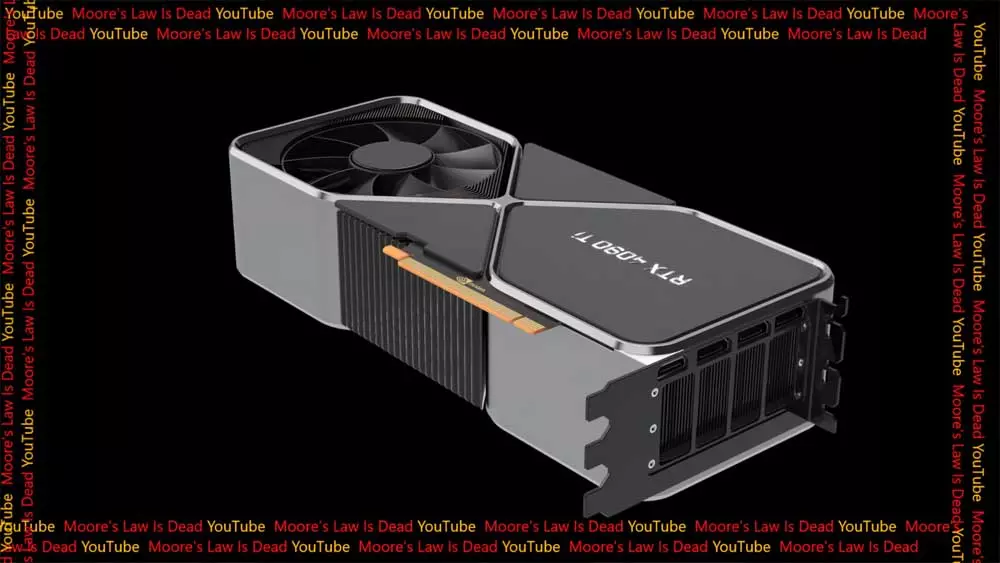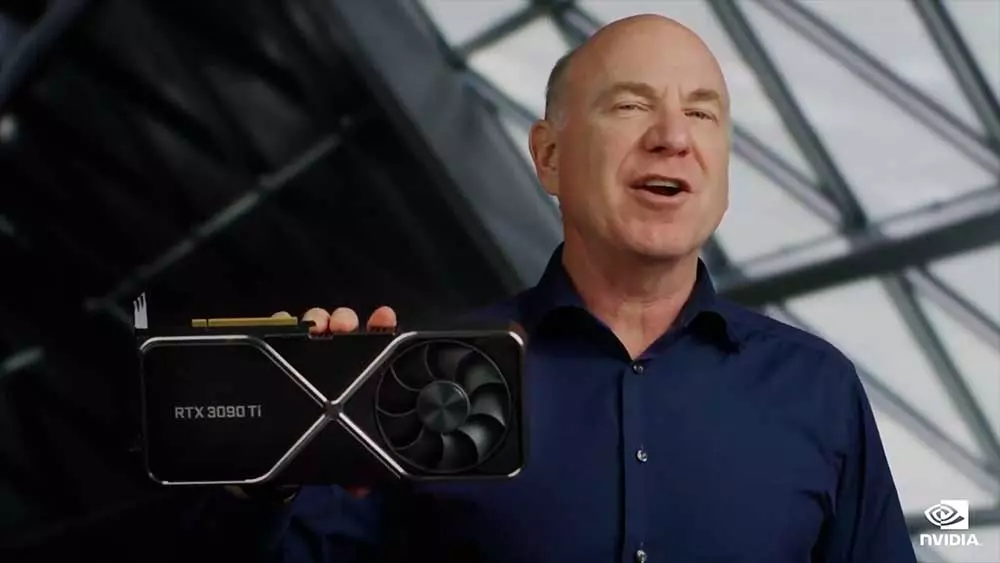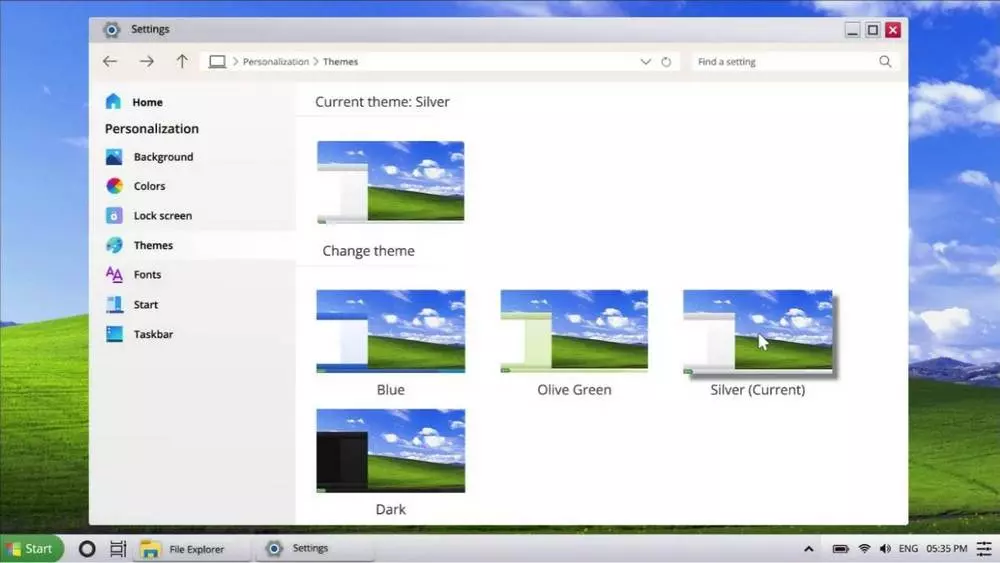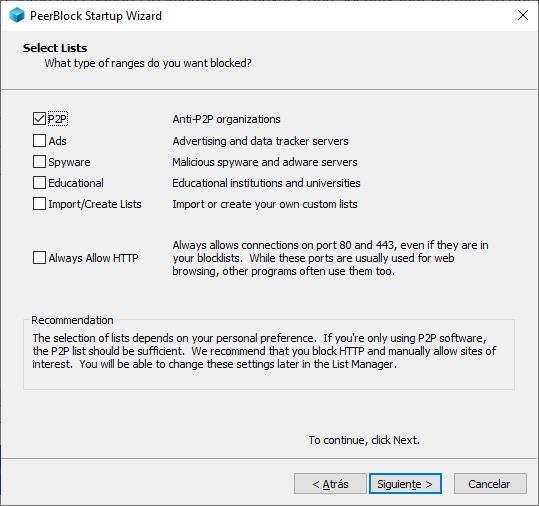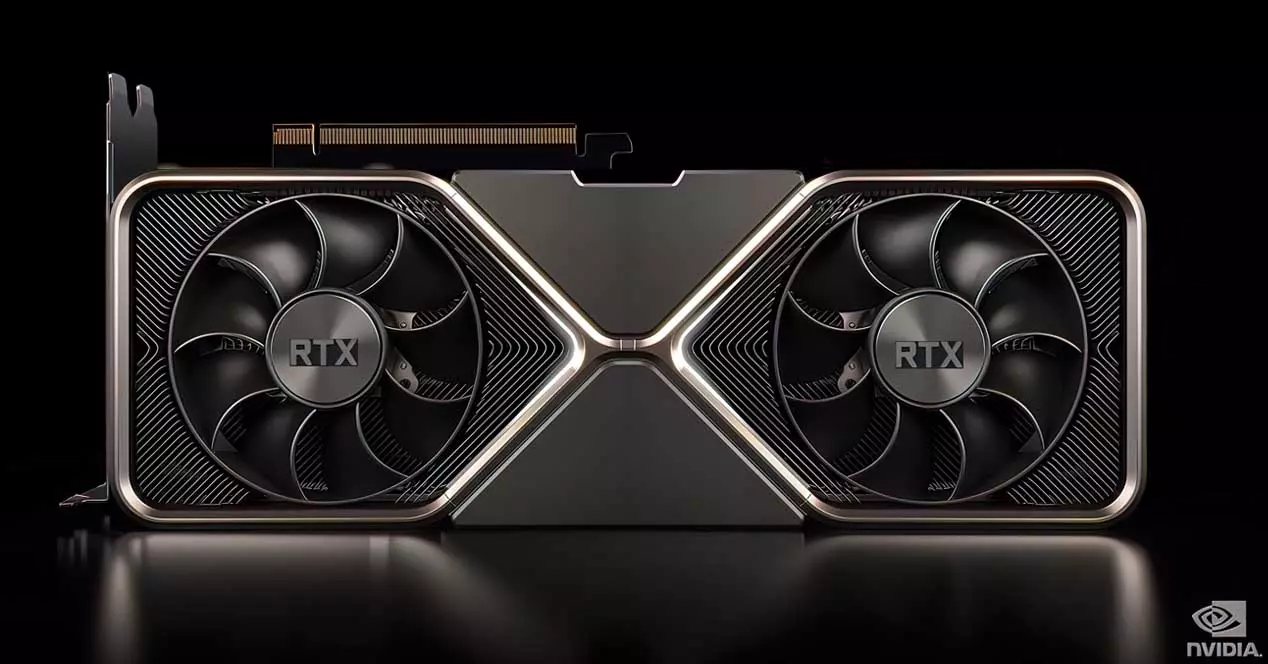
Recently, some supposed renders of NVIDIA’s next generation GPUs (Ada Lovelace), the GeForce, were revealed. RTX 4090 Ti and RTX 4090showing the model’s huge revamped heatsink Founders Edition… so huge that whoever wants to buy one of these new graphics cards had better have a large PC case, and not only because of the length of the graphics card but also because it will occupy 3 PCI sockets wide.
For weeks now, the leaks about NVIDIA’s next flagship graphics card, the RTX 4090 Ti, have been happening one after another. In some of these leaks we could already see its heatsink, but really with unconvincing images that showed a design exactly the same as the Founders Edition of past editions. They were unconvincing due to the simple fact that with these heatsinks, it would be difficult to manage the heat generated by the enormous TDP that these GPUs will carry.
Could this be the RTX 4090 Ti heatsink?
This new leak shows us a set of renders for these graphics with chip AD102 from various angles, which has allowed us to see and get an idea of the enormous dimensions that this graphics card will have. Supposedly, these renders have been made using information gathered from different sources, so you have to “take it with tweezers” because they don’t have anything official for now.
As you can see, the thickness of this supposed RTX 4090 Ti is tremendous and would occupy a little more than 3 PCI sockets, becoming in all probability the largest consumer graphics card in history. According to the source, these heatsinks would be designed to handle GPUs with a TDP of 450 to 600W without problems, which is precisely what we are going to run into in the next generation of NVIDIA graphics cards.
On the other hand, and according to previous leaks that we saw a while ago, the GeForce RTX 40 series will use heatsinks similar to those used by the existing RTX 30 series but with some internal changes. In theory, the Founders Edition cooler on the RTX 4090 Ti and RTX 4090 will be between 3 and 3.5 PCI slots thick, with more fins and more surface area to improve its thermal efficiency, but will this be enough to keep the heat under control? the temperature of the next generation Ada Lovelace GPUs?
At least, they designed a triple-fan cooler for reference board of AD102. https://t.co/vQb2KnpE4y
— kopite7kimi (@kopite7kimi) June 9, 2022
If we take into account that the current RTX 3090 and RTX 3090 Ti share the same heatsink despite the fact that the TGP of the latter is 30% higher (450W compared to 350W) and despite this, the RTX 3090 Ti are kept at a temperature acceptable, we can say that the current design can support up to 450W. For this reason, it is not unreasonable to think that this much larger updated version will easily be able to handle up to 600W.
Only the biggest PC cases will be able to handle NVIDIA’s high-end
The next generation of graphics cards (and here it’s not just NVIDIA, but also AMD) looks like it’s going to be the most powerful ever, but at the cost of brute force; By this we mean that yes, the new graphics cards are going to raise performance levels to unsuspected limits, but at the cost of having high consumption and generating much more heat, to such an extent that the design of the graphics cards has had to be modified. sinks in order to service them properly.
We have already seen before that this has meant that users are going to need to update the PC’s power supply if we want to have one of the brand’s next GPUs, since figures of 1200W are already being talked about in order to have proper operation. . On the other hand, and given the size of the heatsinks that these graphics cards are supposed to use, it will also mean preparing a high-end case with a lot of interior space to accommodate them, and not only because of their length but also because of its thickness.
Another fact that not many media seem to have taken into account is that, with the size and weight of these graphics, there is also going to be a risk that the PCI-Express socket will bend or break. This means that it would be more than advisable to have a motherboard with reinforced PCIe sockets, as well as to use a support to place on the back of the graphics card and thus force it to remain in position and not bend down due to the weight.
